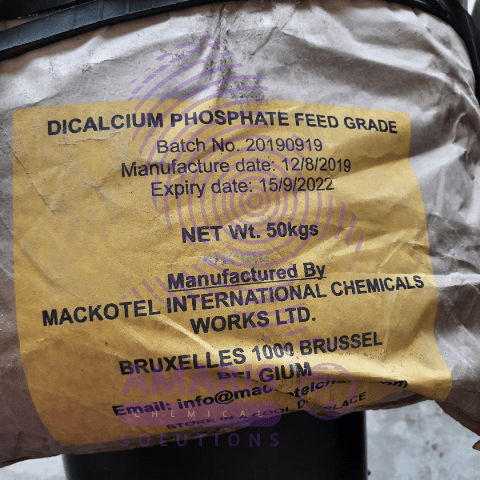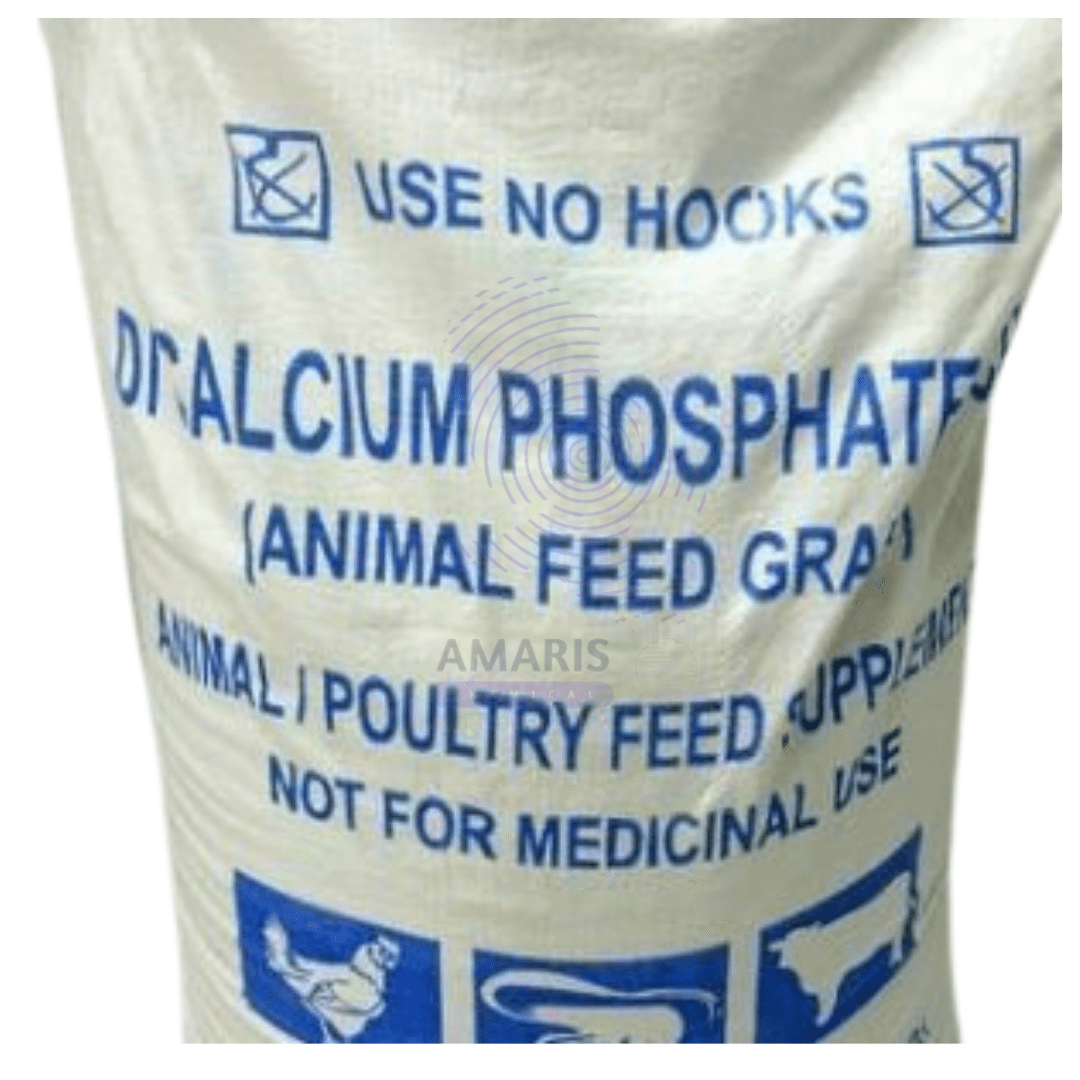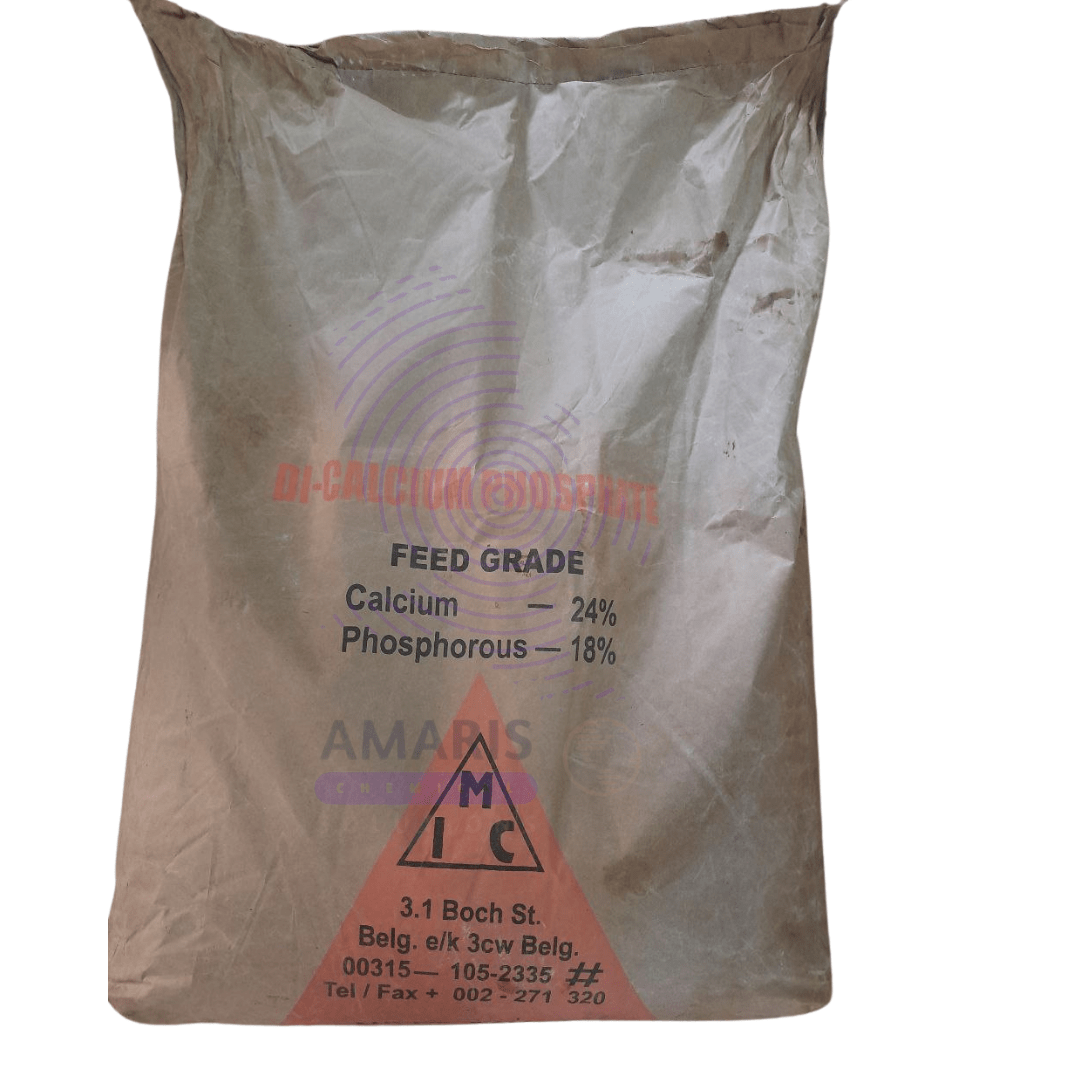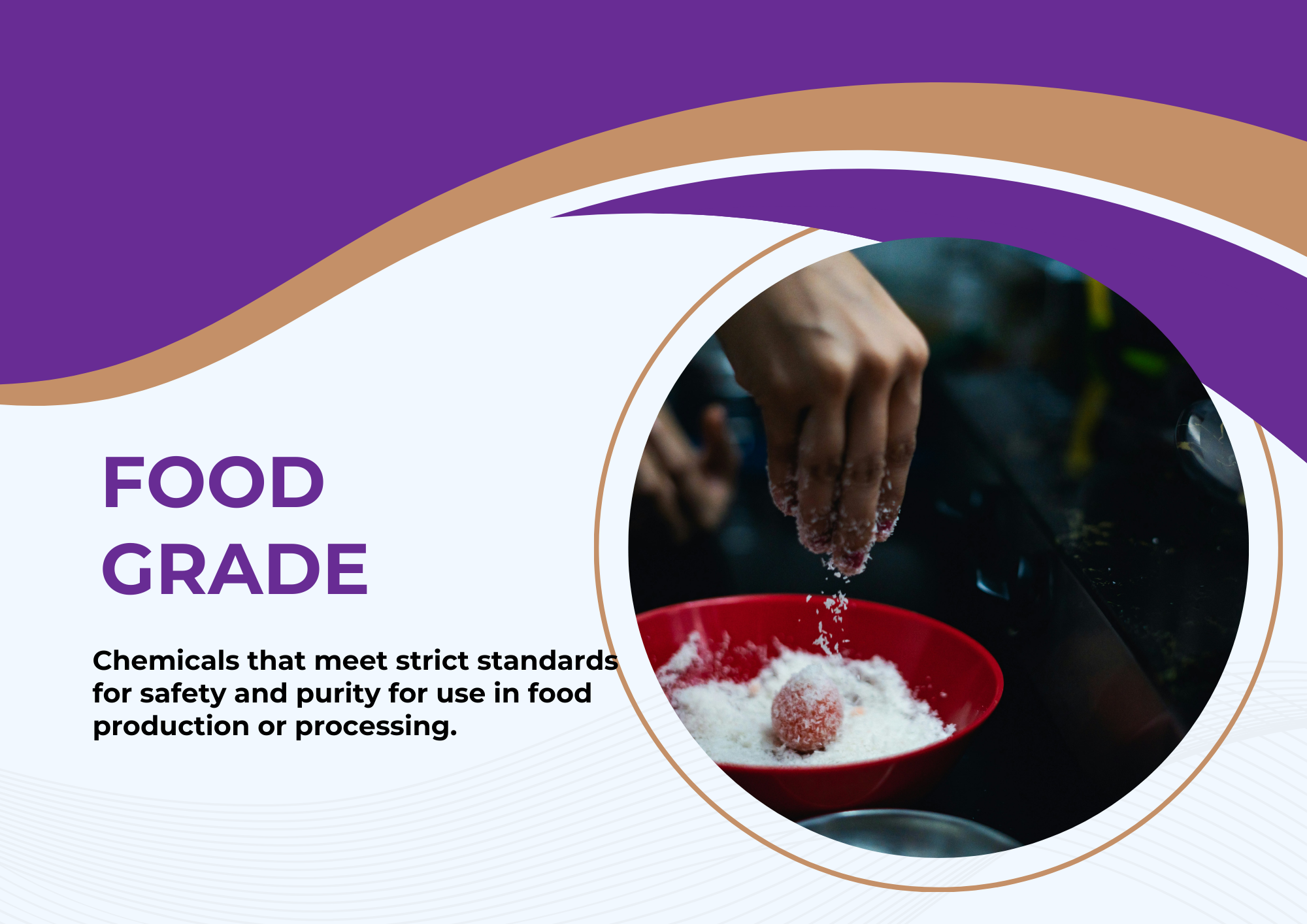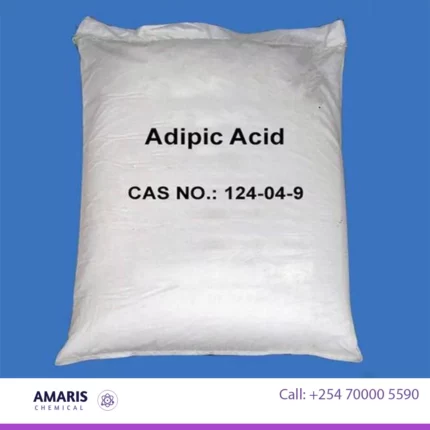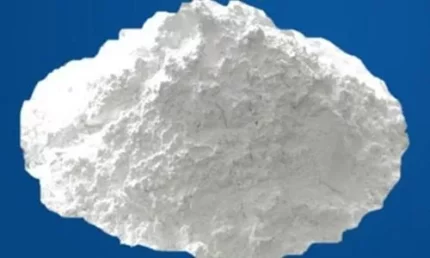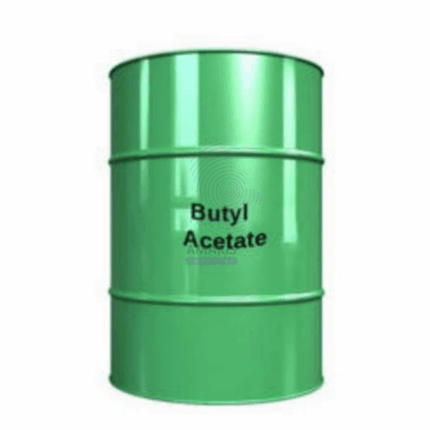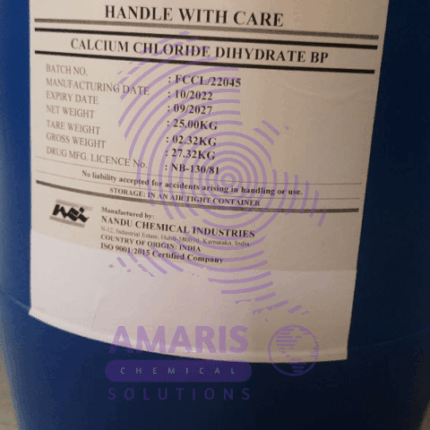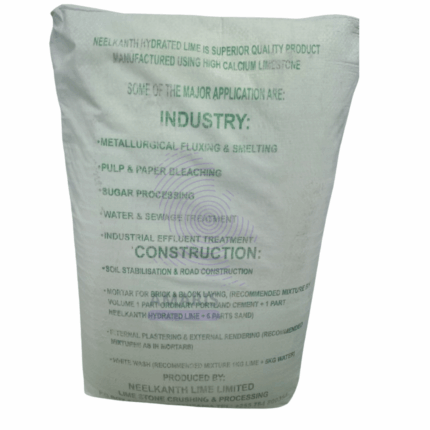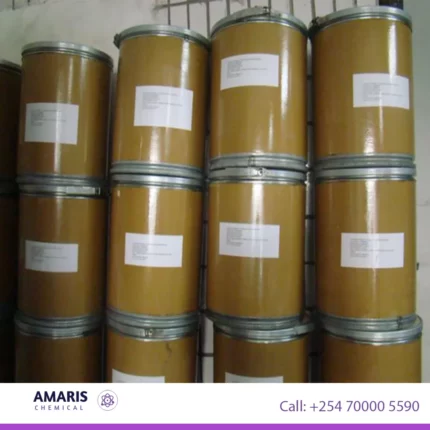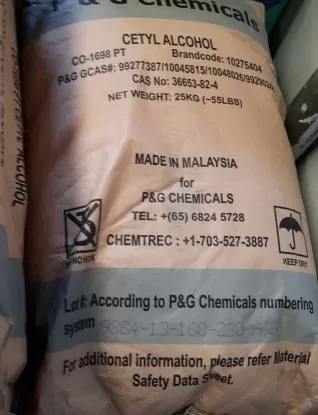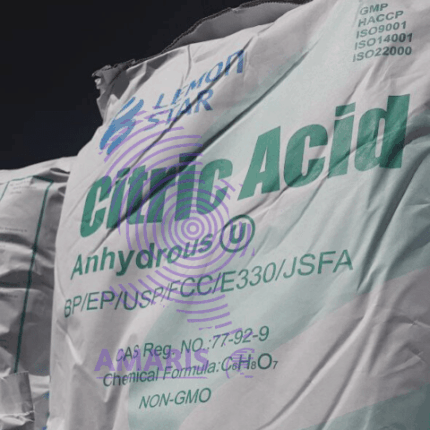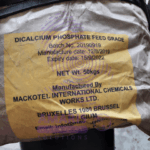

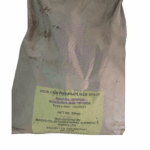
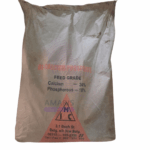
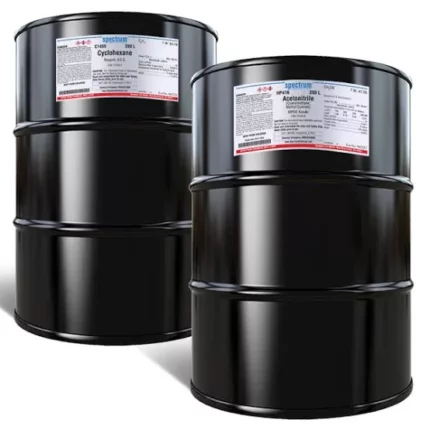
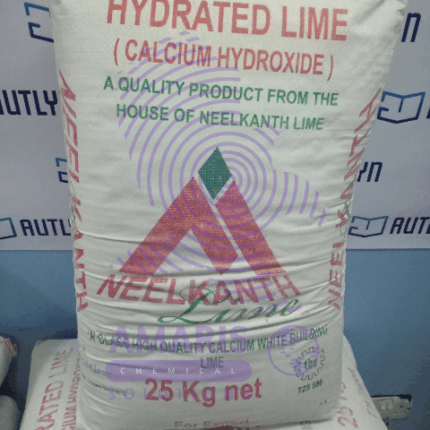
Dicalcium phosphate
KSh6,800.00 Original price was: KSh6,800.00.KSh5,800.00Current price is: KSh5,800.00.
Dicalcium phosphate is a chemical compound with the formula CaHPO4. It is commonly used as a dietary supplement for its high calcium content, as well as a food additive and a pharmaceutical excipient. Dicalcium phosphate can be produced by reacting calcium carbonate or calcium hydroxide with phosphoric acid. It exists in various forms, including anhydrous and dihydrate, and is commonly used in the production of fertilizers, animal feed, and dental products.
Dicalcium phosphate Uses
Primary Uses of Dicalcium Phosphate (DCP)
1. Animal Feed & Nutrition
- Dietary Supplement:
- Provides calcium (Ca) and phosphorus (P)for livestock, poultry, and pets.
- Supports bone development, eggshell formation (poultry), and milk production (dairy cattle).
- Aquaculture Feed: Used in fish/shrimp feed for skeletal growth.
2. Food Industry (Food-Grade DCP)
- Nutritional Fortifier:
- Added to breakfast cereals, flour, and baby formulaas a calcium-phosphate source.
- Leavening Agent:
- Used in baking powderfor dough rising.
- Anti-Caking Agent:
- Prevents clumping in powdered foods (e.g., spices, milk powder).
3. Pharmaceuticals & Dental Care
- Tablet Excipient: Acts as a binder/diluentin pills and supplements.
- Toothpaste Additive:
- Mild abrasive in whitening toothpaste(helps remove plaque).
- Calcium Supplement: Used in bone health medications.
4. Fertilizers (Agricultural Use)
- Slow-Release P Fertilizer:
- Supplies phosphorus to plants without rapid leaching.
Secondary Uses of Dicalcium Phosphate (DCP)
1. Cosmetics & Personal Care
- Bulking Agent: Used in face powders, blush, and compact makeup.
- Mild Abrasive: Found in facial scrubs.
2. Biomedical Applications
- Bone Graft Material: Used in dentistry and orthopedic implantsdue to biocompatibility.
3. Industrial Applications
- Ceramics & Glass Production: Acts as a fluxing agent.
- Fire Retardant: Added to plastics and coatingsfor flame resistance.
4. Water Treatment
- Corrosion Inhibitor: Prevents pipe scaling in hard water.
| AVAILABLE PACK SIZE |
50kg( Metal or Plastic Jerrycan/ Bucket, Bag, Box, Polythene bag, Carton bag) |
|---|---|
| APPEARANCE |
Crystalline |
1. Basic Identification Attributes
- Chemical Name (IUPAC):Calcium hydrogen phosphate (anhydrous) / Calcium hydrogen phosphate dihydrate
- Common/Trade Names:DCP, Dibasic calcium phosphate, Calcium monohydrogen phosphate
- CAS Number:
- Anhydrous: [7757-93-9]
- Dihydrate: [7789-77-7]
- HS Code:25.00 (Phosphates of calcium)
- Molecular Formula:
- Anhydrous: CaHPO₄
- Dihydrate: CaHPO₄·2H₂O
- Synonyms:
- Secondary calcium phosphate
- Brushite (mineral form of dihydrate)
- E341(ii) (food additive code)
2. Physical & Chemical Properties
- Physical State:White crystalline powder
- Color & Odor:White, odorless
- Melting Point:Decomposes at ~109°C (dihydrate loses water), then at ~400°C (forms calcium pyrophosphate)
- Density/Specific Gravity:
- Anhydrous: 2.89 g/cm³
- Dihydrate: 2.31 g/cm³
- Solubility:
- Poor solubility in water (0.02 g/100 mL at 25°C for anhydrous)
- Insoluble in ethanol; soluble in dilute hydrochloric/nitric acids
- pH Level:0–7.4 (10% slurry; neutral)
- Hygroscopicity:Non-hygroscopic (dihydrate form is stable in air)
- Vapor Pressure:Negligible
3. Safety & Hazard Attributes
- Hazard Class (GHS):Not classified as hazardous
- NFPA Ratings:
- Health: 1(Slight irritation)
- Flammability: 0
- Reactivity: 0
- Exposure Limits:
- OSHA PEL: 15 mg/m³ (total dust)
- ACGIH TLV: 10 mg/m³ (respirable dust)
- Reactivity:
- Stable under normal conditions
- Incompatible with strong acids (reacts vigorously)
- May form combustible dust clouds in powder form
4. Storage & Handling Attributes
- Storage Conditions:
- Room temperature, dry environment
- Keep containers tightly sealed to prevent moisture absorption (for anhydrous form)
- Incompatible Materials:
- Strong oxidizers, concentrated acids
- Container Type:
- Multi-wall paper bags with polyethylene liner
- Fiber drums for smaller quantities
- Shelf Life:Indefinite if stored properly
- Special Handling:
- Use dust masks during large-scale handling
- Eye protection recommended for powder processing
5. Regulatory & Compliance Attributes
- Regulatory Status:
- FDA:GRAS (21 CFR 182.1217, 182.5212, 182.8217)
- EU:Approved food additive (E341(ii))
- REACH:Registered
- Hazard Symbols:None required
- Transportation Restrictions:
- Not regulated for transport (non-hazardous)
- Waste Disposal Method:
- Dispose as non-hazardous waste
- May be landfilled per local regulations
6. Environmental & Health Impact
- Ecotoxicity:
- Low aquatic toxicity (LC50 >100 mg/L for fish)
- Phosphate component may contribute to eutrophication in water systems
- Persistence in Environment:
- Calcium component is naturally occurring
- Phosphate may persist in sediments
- Carcinogenicity/Mutagenicity:
- IARC:Not classified
- NTP:Not listed
- Biodegradability:Not applicable (inorganic compound)
Personal Protective Equipment (PPE):
- Respiratory Protection:NIOSH-approved N95 dust mask (for powder handling).
- Eye Protection:Safety goggles or face shield (to prevent dust irritation).
- Gloves:Nitrile or neoprene gloves (for prolonged skin contact).
- Protective Clothing:Lab coat or apron (to minimize dust exposure).
Handling & Storage:
- Dust Control:Use local exhaust ventilation to minimize airborne dust.
- Avoid Moisture:Store in sealed, dry containers to prevent caking.
- Incompatibilities:Keep away from strong acids (can release phosphoric acid fumes).
Inhalation (Dust):
- Move to fresh air
- If breathing difficulty persists, seek medical attention.
Skin Contact:
- Wash thoroughly with soap and water.
- If irritation develops, apply moisturizer.
Eye Contact:
- Rinse with lukewarm water for 15+ minutes, holding eyelids open.
- Seek medical attention if irritation continues.
Ingestion:
- Rinse mouth with water.
- Do NOT induce vomiting.
- Drink water or milkto dilute.
- Seek medical advice if large amounts are ingested.
Flammability:
- Non-flammable, but high temperatures (>200°C/392°F) may decompose it, releasing:
- Phosphorus oxides (toxic fumes).
- Calcium oxide (irritating dust).
Extinguishing Media:
- Water spray, CO₂, dry chemical, or foam.
- Avoid water jets(may spread dust if powdered).
Firefighting Precautions:
- Wear SCBA (self-contained breathing apparatus)if decomposition fumes are present.
- Cool containers exposed to fire with water spray.
- Small Spills:Sweep up carefully (avoid dust generation).
- Large Spills:Dampen with water to suppress dust, then collect for disposal.
- Prevent runoffinto drains (environmental hazard).
Environmental & Regulatory Notes
- Low toxicity, but may contribute to eutrophicationin water bodies.
- Disposal:Follow local regulations (not typically hazardous).



 LABORATORY EQUIPMENT & APPARATUS
LABORATORY EQUIPMENT & APPARATUS
 Fertilizers
Fertilizers Plant Growth Regulators
Plant Growth Regulators Soil Conditioners
Soil Conditioners Animal Feed Additives
Animal Feed Additives Biostimulants
Biostimulants Dough Conditioners
Dough Conditioners Flour Treatments
Flour Treatments Fat Replacers
Fat Replacers Preservatives (baking)
Preservatives (baking)
 Surfactants (cleaning)
Surfactants (cleaning) Builders
Builders Bleaching Agents
Bleaching Agents Enzymes
Enzymes Solvents (cleaning)
Solvents (cleaning) Fragrances
Fragrances

